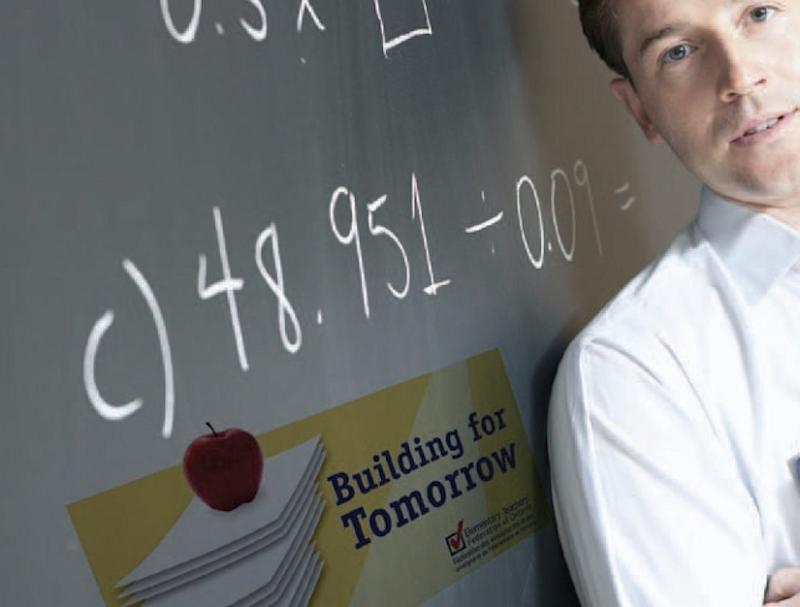
Collective Bargaining Supplement: Professional Development
For the first time, albeit under unusual circumstances, every current teacher collective agreement contains a negotiated lump sum to support individual professional growth. More occasional teacher collective agreements than ever contain provisions to support professional growth. Today there is also growing recognition that teachers themselves are best placed to design their own learning. Collective bargaining can help to improve the environment for professional learning for members.
The need for professional learning does not end when the newly minted teacher emerges – bleary-eyed and massively in debt – from the doors of the faculty. PD will be a survival tool until retirement. Effective PD, the kind that results in additional or improved employee skills, is pure value-added from the employer’s perspective. Despite this, in practice our new graduate can still expect to pay for much of her or his PD over the years. The challenge for collective bargaining is to continually reduce that unfair and unwarranted burden on the individual.
PD is not simply a question of money; it is also one of professional autonomy. If the battle over recertification taught us anything, it is that teachers have a clear idea of what they need to learn to best enable them to do their jobs. There is a well-established precedent for this emphasis on teachers controlling their own learning. As Barbara Richter noted recently in Voice (Decem- ber 06, Vol. 9, No. 2), elementary teachers’ federations began developing their own in-service programs in the early postwar period, in response to the government’s lowering of standards for entry to the profession. The federations provided what teachers needed to be successful.
School boards, of course, have always offered PD opportunities outside of the collective bargaining framework. For example, a number of boards have moved to a web-based report card system and are training teachers to use it.
However, this kind of targeted training does not address the many factors that drive the need for professional learning: changes in curriculum, increased paperwork, the focus on narrowly based assessment tools, changes in student and community demographics, limited resources in areas such as ESL, and the general downloading of ever more responsibilities onto teachers. Any educator who takes a dip in the alphabet soup of today’s schools—DRA, AEP, EIP, IEP, CASI—will recognize the gap between the training that is available and the training that is needed.
The scope of bargaining for PD is fairly broad. For example, the number of professional activity days is set by Regulation 304 of the Education Act (the number has fluctuated over the past 10 years). The present regulation provides both man- datory and discretionary days (i.e., days a board must designate as PA days, and days it may designate). As long as negotiators stay within the limits of the regulation, they enjoy considerable latitude in bargaining. Locals are also free to negotiate for union input into the programming of PA days.
Designated funds for professional learning is another bargaining issue. Funding typically takes the form of a negotiated lump or per capita sum that members can access. Governance mechanisms vary from agreement to agreement; many funds are jointly administered by the board and the union, while others are administered solely by the local. One teacher local, Hastings-Prince Edward, has even negotiated a special technology fund that members can access periodically to help defray computer costs.
The funding that every teacher collective agreement now contains came about as part of the provincial framework agreement reached in April 2005. A $500 “teacher development account” was made available to each teacher as reimbursement for purchases of computers, software, professional materials, and professional development courses.
In part, this money was a sweetener to the overall negotiating package. But it was also a rec- ognition that for a long time teachers have been subsidizing their employers by funding their own professional learning.
The teacher development account, however, was a one-time event. While PD funds have been a feature of many collective agreements for decades, they have continually been prey to larger economic forces.
For example, the Social Contract in 1993 froze yearly increments for three years. For teachers not at maximum salary, this was a considerable financial hit. It was, however, possible to “buy” the increments back, by negotiating savings in other parts of the collective agreement. Among other measures, a few locals and boards started putting their PD funds on hold.
By 1996, locals had more or less bought themselves out of the freeze, but were quickly faced with a new funding model, school board amalgamation, Bill 160 – and Mike Harris. In the district school board teacher agreements covering
1998–2000, 21 out of 31 contained some form of negotiated PD funding. Since then, three of these funds have been somewhat increased, two have been somewhat reduced, nine have stayed the same, and seven, or one-third, are no longer in the agreements. In each case, these provisions fell victim to funding pressures.
For occasional teachers, the overall trend has been somewhat better. Far more so than their teacher colleagues, occasional teachers have had to fight for professional recognition and respect. Teaching is not the only occupation in which a pool of replacement employees is deployed. No one would accept the notion that a replacement nurse needs any less training than a nurse who works every day. Yet counterintuitive as it is, that has sometimes been the employer mindset with respect to occasional teachers.
One way to counter this attitude is to negotiate for more PD opportunities for occasional teachers. In a couple of cases, this has taken the form of one, or one-half, paid PA day per year, though this type of provision has been quite rare. For collective agreements covering 1998-2000, there were only two occasional teacher locals with negotiated PD funds. Today there are 10, with funds generally administered by the union and including funding for individual PD and/or PD days sponsored by the local. While not large, these funds have been growing in both number and dollar amount. They represent a significant achievement in occasional teacher collective bargaining.
It may well be that for all ETFO members the increased profile gained for professional development in the last bargaining round will carry over to next year’s negotiations. We can only hope so – for the sake of the new teacher, the teacher mid-career and the teacher nearing retirement.
